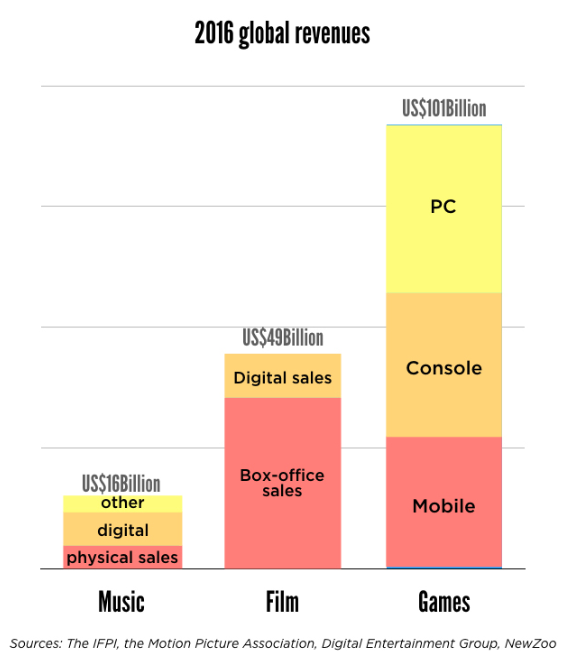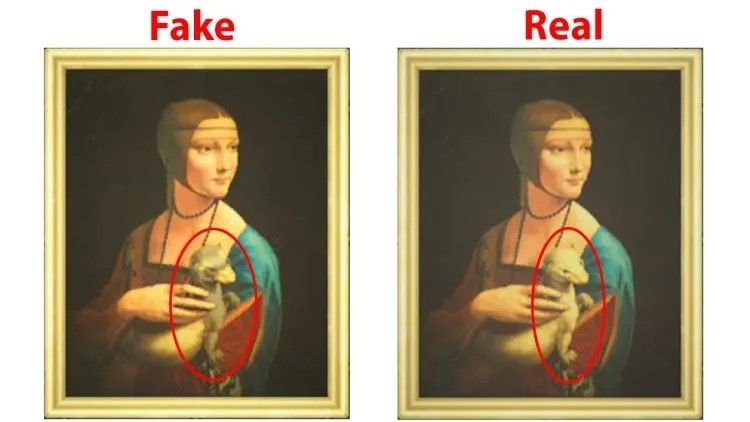Why Blockchain?

When people learn I’m into crypto and blockchain, the next question is usually “why?” In 2021, people were interested in understanding the hype around crypto. Today, the hype has moved on to the newest trending technology whether that be AI, LK-99 superconductors, or whatever comes next.

Moving forward, when I get asked “why” I’m so interested in blockchain and crypto, I will point people to this post as a full explainer. I want to start by noting that I’m not interested in gambling or speculating - I don't day-trade jpegs or hope to strike it rich because Doge went to $1. Instead, I’m really interested in the underlying technology and the ways it can solve new problems.
My general thesis is the following:
The internet is becoming increasingly intertwined with our lives. From the way we buy clothes, keep up with our friends, or watch movies, our lives are becoming increasingly digital. As this trend continues, blockchains will provide important new ways to secure and control our digital lives similar to what we all expect in the real world.
This post will walk through:
- Why digital commerce matters
- How blockchains can be used to secure our digital lives
- What the future of the internet may look like
If you are brand new to blockchain, some of the terminology can be pretty intimidating. While these posts can be read in either order, this post will focus on the “why” while my Blockchain and Web3 Explainer focuses on explaining the “what.”

If you like this article, share with your friends, and subscribe by clicking below:
Digital Commerce Matters
According to research from Pew, 93% of American adults use the internet. For Americans between the ages of 18 and 29, 100% use the internet. This is up from 70% in 2000.

If you're a white collar professional, how much time do you spend looking at a computer screen versus taking a meeting in your physical office? For most, even if you spend your entire day sitting in a physical office, your mind is likely focused on the internet or a digital environment - sending emails, talking on Zoom, tracking tasks on a digital dashboard. After logging off, you go home and stream a movie using the internet, or to Amazon to buy something, or to Uber Eats to have dinner delivered.
For many, the internet is not a separate place, but a constant companion, used in all aspects of their lives.
While increasing portions of our “regular” lives are being digitized, a clear example of the ways that digital commerce matters is in video games and gaming culture. Since at least 2016, video games have been the largest media category, with global revenues larger than music and movies combined.

One of the world’s most popular games is Counter-Strike. Professional Counter-Strike tournaments have cash prizes in the millions of dollars and often fill large arenas:

In May of 2023, Counter-Strike peaked at 1.8 million concurrent players and has been downloaded by more than 25 million people. One unique aspect of Counter-Strike is its weapon skins.

For each of the weapons in Counter-Strike, there are unique skins which can be unlocked through the use of cases.

Cases are like slot machines for weapon skins. Different cases have different unlocks, and each unlock has differing levels of rarity. The publisher of Counter-Strike allows players to trade these skins, creating a market for rare skins.

For the full case opening experience, I recommend watching the video below:
Gamers, especially hardcore gamers, spend hundreds if not thousands of hours playing games like Counter-Strike. Similar to communities which collect rare baseball cards, or rare art, weapon skins are a way for people to flex on their friends. Some people like to hang multi-million dollar Andy Warhol paintings in their homes, other people display signed baseballs or football jerseys.
While you might never spend $100 on a Counter-strike weapon skin, you might spend $100 on the jersey of your favorite NFL star or Gucci sunglasses. For gamers, spending $100 on a weapon skin they will use for hundreds of hours makes more sense than $100 on a football jersey they will never wear.
As our lives are spent increasingly online, digital objects are - and will continue to be - valuable for people.
Blockchains?
If you accept the above, that our lives will become increasingly digital in the future, you may ask “how do blockchains fit into this?”
Blockchains are valuable because they are a neutral way to own our digital lives.
Neutral
When you use the internet today, it is nearly impossible to control your data. While passing a national data privacy framework would take major strides to increase the control you have of your data, the current internet is designed in a way which gives others control of your access to the internet.
The modern internet operates similar to a hub and spoke model, where centralized tech companies have servers that you connect with to access products and services. While this may not be obvious, when you think about how you use Facebook.com - by navigating to the website and interacting with images and text within that website - it becomes more clear. Users dont control Facebook, Facebook/Meta does. This isnt a good or bad thing, it is simply a design choice made in the early days of the internet.

In contrast to the hub and spoke model, blockchains are peer-to-peer, decentralized networks, meaning that no one entity controls the blockchain, it’s neutrally owned and controlled by the users.

For more on blockchains neutrality/basics, read my Blockchain and Web3 Explainer.
Ownership
While the first use cases for blockchains were financial, nonfungible tokens (NFT) are emerging as a new, “killer app” for blockchains. Scarcity is something that has never existed on the internet before.
Breaking down the terms in NFT:
- Fungibility - the ability to replace or be replaced by another identical item. A fungible item could be a $1 bill or a piece of wood. Any $1 bill can easily replace any other $1 bill just like any 2x4 can easily replace another 2x4. In contrast, nonfungible items are unique, 1 of 1 items. The Mona Lisa, your house, your laptop; most things in life are not easily replaced by another identical item.
- Token - tokens are representations of information secured using a blockchain. This information could be financial information like a security, artwork, computer code, or data.
Combining the two, nonfungible tokens are unique, digital representations of information secured by a blockchain. NFTs are used to certify authenticity and ownership of digital items. In the art and antiquities industries, forgeries are a major problem - would you be able to tell which of the paintings below was fake it wasn't labeled?

Because NFTs can signify individuality and uniqueness on-chain, ownership and property rights can be attached to things like digital artwork or other digital collectibles. A few examples of industries where NFTs are being piloted include:
- Ticketing - Ticketmaster Launches Token-Gated Sales, Enabling Artists to Reward Fans
- Fashion - Gucci partnered with NFT marketplace SuperRare to look ahead to “The Next 100 Years”
- Collectibles - Topps to release Baseball NFT Collection
Digital Ownership and the Future of the Internet
When combined with nonfungible tokens and digital scarcity, the Counter-Strike example becomes more clear.
Blockchains enable people to have property rights for digital goods.
Today, blockchains do not have the throughput or scalability to revolutionize all aspects of our digital lives, but this is changing. Recently, the Solana Foundation announced compressed NFTs, a new way to quickly and cheaply mint NFTs while maintaining the security of digital ownership.

Solana is one of, if not the, fastest and cheapest blockchains in the world. In July 2023, the average fee per transaction was 0.000070629 SOL, or $0.001383622 - near zero. Recently, Solana announced compressed NFTs, bringing the cost of minting NFTs to near zero. Minting 100 million NFTs on Solana costs $1,193.00 compared to $3.36 billion on Ethereum, another L1 blockchain.
As blockchains mature and large enterprises come online, the cost of enabling digital ownership will approach zero.
To bring this point home, think about Amazon Prime and its digital lines of business like Prime Video.

While some videos are “Included with Prime” and stream-only, other show and movies are available for purchase or rental. For example, I bought Sicario, one of my favorite Denis Villeneuve movies, for $10.

If I had bought the physical, blue-ray version of this movie, it would be clear that I would own this movie and no one could take it away from me. However, in today’s world of streaming, do I really own Sicario? Not really. Hypothetically, if Amazon were to get in a contract dispute with the studio behind Sicario, resulting in the video being pulled from Amazon Prime, I would lose access to a movie that I “own.”
Today, we don't own any of our digital goods, we are permanently renting them.
In contrast to the Amazon Prime example, if Sicario was issued to me as an NFT, my ownership of the video could not be taken from me. NFTs enable ownership that is not reliant on anyone else. Because NFTs can be relied on to demonstrate ownership, they return control to average users of the internet like you and I. As the costs of enabling digital ownership go to zero, consumers will demand this technology be adopted.
Blockchain Empowers People
In 2023, many crypto-skeptics are dancing on the grave of blockchain. While blockchain may not be the hyped up technology of 2021, it certainly isn’t dead. The Gartner Hype Cycle, depicted below, is a graphical representation of the typical maturation and adoption of a technology by society.

In 2021, blockchain had a lot of inflated expectations and crashed hard from the hype. From November 2021 to July 2022, the blockchain industry crashed more than $2 Trillion, stabilizing at roughly a third of its previous peak.
As our lives become increasingly intertwined with the internet, we will need to have increased control over our digital selves. Digital serfdom to today’s large tech giants is not a world anyone wants to live in.
The internet which got us here cannot get us there. As the internet changes, so too must the technology which underpins it.
Digital commerce matters because people are spending an increasing amount of time online. As we spend more time online, more areas of our lives come to rely on Big Tech and the rules of their platforms. To return power to the average users, blockchains can be added as a new infrastructure layer of the internet, enabling new business models and incentive structures.
Despite 70 percent declines in crypto prices, the number of full-time developers working on blockchains and blockchain related apps have only declined about 16 percent. These developers aren’t out to strike it rich gambling on tokens - they’re building a new evolution of the internet.
Blockchain is not important because it is a crypto-casino, it is important because it enables people to control the digital halves of their lives.

-Michael
If you made it this far, you'll probably like some of my other articles. Click below to make sure you don't miss one:






